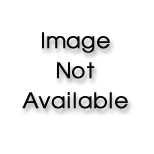
Concept explainers
(a)
Interpretation:
The blanks in the given sentence should be filled with suitable word to identify the major function of blood.
Concept introduction:
Blood is a connective tissue that flows through blood vessels. Blood carries oxygen, nutrients, and carbon dioxide to cells. The other major functions of blood are listed below,
Functions of blood
Deliver oxygen to all body cells.
Deliver digested nutrients from fats, proteins and carbohydrates to body cells.
Deliver chemical messengers to some body cells.
Deliver water, minerals and vitamins to cells.
(b)
Interpretation:
The blanks in the given sentence should be filled with suitable word to identify the major function of blood.
Concept introduction:
Blood is a connective tissue that flows through blood vessels. Blood carries oxygen, nutrients, and carbon dioxide to cells. The other major functions of blood are listed below,
Functions of blood
Deliver oxygen to all body cells.
Deliver digested nutrients from fats, proteins and carbohydrates to body cells.
Deliver chemical messengers to some body cells.
Deliver water, minerals and vitamins to cells.
(c)
Interpretation:
The blanks in the given sentence should be filled with suitable word to identify the major function of blood.
Concept introduction:
Blood is a connective tissue that flows through blood vessels. Blood carries oxygen, nutrients, and carbon dioxide to cells. The other major functions of blood are listed below,
Functions of blood
Deliver oxygen to all body cells.
Deliver digested nutrients from fats, proteins and carbohydrates to body cells.
Deliver chemical messengers to some body cells.
Deliver water, minerals and vitamins to cells.
(d)
Interpretation:
The blanks in the given sentence should be filled with suitable word to identify the major function of blood.
Concept introduction:
Blood is a connective tissue that flows through blood vessels. Blood carries oxygen, nutrients, and carbon dioxide to cells. The other major functions of blood are listed below,
Functions of blood
Deliver oxygen to all body cells.
Deliver digested nutrients from fats, proteins and carbohydrates to body cells.
Deliver chemical messengers to some body cells.
Deliver water, minerals and vitamins to cells.
(e)
Interpretation:
The blanks in the given sentence should be filled with suitable word to identify the major function of blood.
Concept introduction:
Blood is a connective tissue that flows through blood vessels. Blood carries oxygen, nutrients, and carbon dioxide to cells. The other major functions of blood are listed below,
Functions of blood
Deliver oxygen to all body cells.
Deliver digested nutrients from fats, proteins and carbohydrates to body cells.
Deliver chemical messengers (hormones) to some body cells.
Deliver water, minerals and vitamins to cells.
(f)
Interpretation:
The blanks in the given sentence should be filled with suitable word to identify the major function of blood.
Concept introduction:
Blood is a connective tissue that flows through blood vessels. Blood carries oxygen, nutrients, and carbon dioxide to cells. The other major functions of blood are listed below,
Functions of blood
Deliver oxygen to all body cells.
Deliver digested nutrients from fats, proteins and carbohydrates to body cells.
Deliver chemical messengers to some body cells.
Deliver water, minerals and vitamins to cells.
Want to see the full answer?
Check out a sample textbook solution
Chapter 29 Solutions
FUND.OF GEN CHEM CHAP 1-13 W/ACCESS
- High blood pressure often is accompanied by kidney damage. In somepeople the kidney damage is subsequent to the high blood pressure, but in others the kidney damage is what caused the high blood pressure. How would a low-salt diet enable you to determine whether the high blood pressure or the kidney damage came first?arrow_forwardIf a substance in the blood is filtered, and not all of it is completely reabsorbed back into the blood, does its level in the blood increase, decrease, or stay the same? Explain.arrow_forwardWhich substances in the blood are never filtered out into the urine?arrow_forward
- what are the functions of plasma?arrow_forwardThomas has hepatitis, which is disrupting his liver functions. What kinds of symptoms would he be experiencing based on the role(s) of the liver related to blood?arrow_forwardWhy does body temperature increases when blood vessel dilation is decreases?arrow_forward
- The filtering of blood through an artificial kidney is called______?arrow_forwardDelali A. has the “stomach flu” that is going around campus and has been vomiting profusely for the past 24 hours. Not only has she been unable to keep down fluids or food, but she also has lost the acidic digestive juices secreted by the stomach that are normally reabsorbed back into the blood farther down the digestive tract. What body systems respond to resist these changes?arrow_forwardWhich gastric cells indirectly help in erythropoiesis?arrow_forward
 Human Biology (MindTap Course List)BiologyISBN:9781305112100Author:Cecie Starr, Beverly McMillanPublisher:Cengage Learning
Human Biology (MindTap Course List)BiologyISBN:9781305112100Author:Cecie Starr, Beverly McMillanPublisher:Cengage Learning

